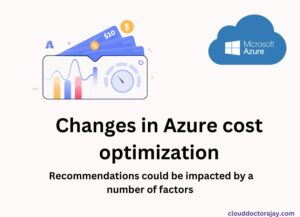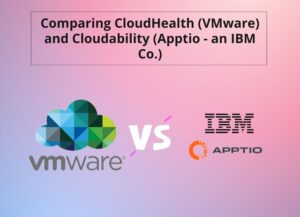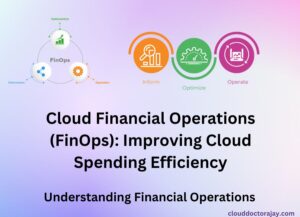Introduction: –
The IT sector is changing toward more sustainable practices in a time when environmental awareness is becoming more and more significant. The notion of Cloud GreenOps, which blends cloud computing and environmental responsibility, is one area of study. In this blog article, we will delve into the world of Cloud GreenOps and examine its importance, guiding principles, and strategies for how businesses may use the cloud to operate more sustainably.
Knowledge of Cloud GreenOps: –
The term “Cloud Green Ops,” which stands for “Cloud Green Operations,” refers to a methodology that places an emphasis on green operations for cloud computing. It entails streamlining cloud workflows and resources to reduce carbon emissions and other environmental impacts.
By implementing GreenOps, cloud providers and businesses hope to cut down on energy use, encourage resource efficiency, and support sustainability initiatives.
Important Cloud GreenOps Principles: –
1. Energy Efficiency:
Maximizing energy efficiency is one of Cloud GreenOps’ fundamental tenets. In order to reduce electricity usage, this entails choosing energy-efficient hardware, optimizing data center cooling systems, and putting power management tactics into practice.
2. Renewable Energy:
GreenOps promotes the use of renewable energy to power data centers and cloud infrastructure, including hydroelectric, wind, and solar energy. To support a better energy mix, businesses can collaborate with cloud service providers who place a high priority on renewable energy.
3. Resource Management
In Cloud GreenOps, resource efficiency is key. This involves leveraging serverless architectures to remove idle resources, auto-scaling to fit resource demands, and right-sizing virtual machines.
4. Calculating one’s carbon footprint
Cloud The carbon footprint of cloud operations is measured and reported as part of green operations. Organizations can track their progress in decreasing their environmental effect by using methodology and tools to compute emissions.
5. Lifecycle Management
It’s crucial to take into account a cloud resource’s complete lifecycle. GreenOps emphasizes responsible resource management throughout the entire process, from procurement and provisioning through decommissioning, to reduce waste.
Changes in Azure cost optimization recommendations could be impacted by a number of factors
Benefits of GreenOps in the Cloud: –
Putting Cloud GreenOps practices into practice can have a number of important advantages:
1. Reduction of Environmental Impact
Cloud GreenOps helps to reduce the carbon footprint associated with cloud operations by optimizing energy and resource use, which has a good effect on the environment.
2. Savings on costs
Effective resource management reduces costs while simultaneously improving the environment. By more efficiently using resources, businesses can reduce their cloud costs.
3. Corporate Social Responsibility
Adopting Cloud GreenOps shows a company’s dedication to ethical corporate behavior and environmental sustainability. This can improve stakeholder relationships and brand reputation.
4. Complying with regulations
Cloud GreenOps can assist businesses in adhering to changing environmental standards and laws as they grow more stringent.
Practice Cloud GreenOps: –
Here are some concrete actions that businesses may take to adopt Cloud GreenOps:
1. Choose cloud service providers
Who have an emphasis on renewable energy and who are dedicated to sustainability.
2. Increase Workloads
Workloads and applications should be analyzed to find potential for resource optimization and efficiency gains.
Comparing FinOps Tools – CloudHealth (VMware) and Cloudability (Apptio)
3. Apply automated systems
To efficiently manage resource provisioning, scaling, and deprovisioning, use automation technologies.
4. Monitoring and Reporting
Keep a close eye on how resources are being used and carbon emissions are being produced, and report your findings.
5. Spread Knowledge and Awareness
Inform teams of the value of Cloud GreenOps and promote an eco-friendly work atmosphere.
Conclusion:
A futuristic strategy that integrates cloud computing with environmental sustainability is called cloud green operations (cloud GreenOps). Organizations may contribute to a greener future while gaining the advantages of cost savings, brand development, and regulatory compliance by prioritizing energy efficiency, renewable energy sources, and responsible resource management. Cloud GreenOps gives businesses a significant way to use their cloud operations to positively impact the world’s ongoing efforts to combat climate change.




